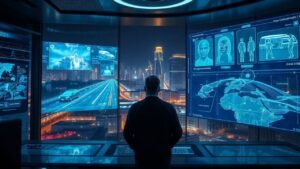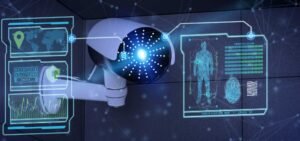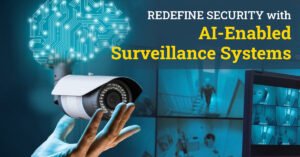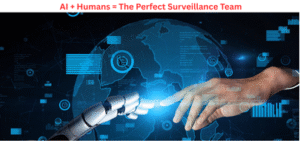How Artificial Intelligence Is Transforming Video Surveillance?
Artificial Intelligence is reshaping modern security. Traditional surveillance depends on human operators — who can only monitor a few cameras effectively before losing focus. AI-powered video analytics solves this problem by automatically analyzing video feeds, detecting threats in real time, and eliminating the guesswork in security operations.
Today’s advanced CCTV systems equipped with AI can:
✔ Detect human movement vs. shadows or animals
✔ Identify suspicious behavior before a crime happens
✔ Recognize vehicles, objects, and even license plates
✔ Alert security teams instantly with verified events
🧠 Why AI Is Needed in Modern Video Surveillance
Security operations now deal with:
Hundreds (or thousands) of cameras
Large facilities with movement everywhere
Cameras recording 24/7 — mostly uneventful footage
Human operators simply cannot monitor all of this effectively. Studies show attention drops dramatically within minutes, causing delayed responses and missed incidents.
AI eliminates these weaknesses by:
Watching every camera stream at once
Flagging only the important events
Removing “noise” like moving leaves, headlights, or shadows
Delivering actionable insights instead of endless video
🏆 The Evolution of Video Analytics
| Technology Stage | What It Did | Why It Failed |
|---|---|---|
| ➤ Motion Detection | Alerts on any movement | Too many false alarms outdoors |
| ➤ Rule-Based Analytics | Detects objects in restricted zones | Not useful in busy environments |
| ⭐ AI-Powered Analytics (Deep Learning) | Understands human behavior and context | Best accuracy + real-time response |
AI video analytics is trained on millions of images. It learns:
What a human looks like — even when running or crouching
Normal vs. unusual behavior
Environmental patterns unique to each property
🎯 Practical AI Use Cases in CCTV Systems
AI is changing what camera systems can do, not just what they record.
🔹 Real-Time Intrusion Detection (Low False Alarms)
Detects only people and vehicles where they shouldn’t be — day or night.
If a threat is verified, the system can trigger:
Automatic sirens
Strobe lights
Two-way audio talk-down:
“Security has been notified — leave immediately!”
This proactive response stops crimes before they happen.
🔹 Behavioral Intelligence for Active Environments
Unlike rule-based systems, AI can analyze crowded places:
Hospitals
Universities
Stadiums
Retail stores
Manufacturing facilities
It identifies patterns such as:
Fighting or aggressive behavior
Someone slipping or falling (safety risk)
Car driving the wrong direction
A fire starting in a hallway
A person entering a dangerous restricted zone
Instead of only catching trespassers — it protects people everywhere.
🔹 Facial & License Plate Recognition (LPR/ANPR)
Instantly identifies:
Known threats
Repeat offenders
Unauthorized visitors
Vehicles of interest
Useful for:
Access control
Law enforcement support
Automated gate entry
📊 Verified Alerts = Better Police Response
Traditional alarms = 95% false alerts
(Average police response time: ❌ Over 45 minutes)
AI-verified events include:
Short video clips
Object classification (human/vehicle)
Geolocation mapping
Police treat these as real crimes in progress, not false alarms — improving response times dramatically.
⚠ Understanding Limitations
AI is powerful — but not magic.
Challenges include:
Very small or distant objects may not be detected
Low-resolution / wide-angle cameras reduce accuracy
Complex environments require camera-specific tuning
Privacy laws require responsible usage
Good system design with proper camera placement solves most issues.
🏢 Business Benefits Go Beyond Security
🤝 AI + Humans = The Perfect Surveillance Team
AI doesn’t replace security staff — it amplifies them.
AI does:
✔ 24/7 monitoring
✔ Fast detection
✔ Data processing
Humans do:
✔ Judgment
✔ Decision-making
✔ Response and intervention
Together, they create the world’s most effective security model.
🔐 Ready to Upgrade to AI-Powered Surveillance?
Secure It Global specializes in advanced video analytics systems from world-leading brands:
Uniview AIoT
Hanwha Vision Wisenet AI
Dahua AI-Series
Montavue Smart Systems
We provide:
✔ System design & consultation
✔ Professional installation
✔ Remote monitoring & support
✔ Analytics setup tailored to your environment
📞 Contact to unlock smarter security with real-time AI protection.
Secure IT Global LLC
167 Madison Ave
New York, NY 10016
(888) 902 2303










